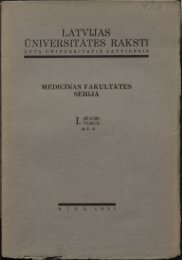UMIVERSITATIS LATVIENSIS - DSpace
UMIVERSITATIS LATVIENSIS - DSpace
UMIVERSITATIS LATVIENSIS - DSpace
Sie wollen auch ein ePaper? Erhöhen Sie die Reichweite Ihrer Titel.
YUMPU macht aus Druck-PDFs automatisch weboptimierte ePaper, die Google liebt.
number of species known from each of the countries. Owing to<br />
the collections of W. A. Weymouth made during the<br />
course of many years in Tasmania, some parts<br />
of this island<br />
must be looked upon as well investigated in respect to our<br />
genus. They show an abundance of forms which is rarely to<br />
be met in Ulota on areas of equal size in other countries,<br />
and it<br />
was striking enough to find a good number of peculiar species<br />
in specimens gathered in the same locality. Quite the opposite<br />
must be said about Australia, from which country I had but<br />
litlle material. It is probable that some of the species hitherto<br />
known from Tasmania will be found in South Australia too. In<br />
some species,<br />
as U lutea and U. viridis, distributed in Tasmania<br />
and New Zealand, there could be found slight differences<br />
between the Tasmanian and the New Zealand plant.<br />
All species hitherto known from the region<br />
are confined<br />
to it. Among them U lutea shows affinity to U. fulva Brid. —<br />
a species of the Madagascar region, and U. viridis has species<br />
closely allied to it in different parts<br />
of the world as is shown<br />
further on. U membranata holds a peculiar place<br />
genus,<br />
the praeperistome and the large<br />
in the<br />
sometimes multicellular<br />
spores being new characters for the genus. This species,<br />
bearing a praeperistome,<br />
and U cochleata, with the sto-<br />
mata placed in the middle and the upper part of the<br />
capsule, make the delimitation of Ulota and Orthotri-<br />
chum still more difficult. In reality the separation of these<br />
two as distinct genera is based more on practical considerations<br />
than on differences in characters,<br />
and therefore it seems that<br />
biota can claim no higher rank than that of a subgenus of<br />
Orthotrichum. In consequence of this it would have been better<br />
to revise both genera at the same time, and in reality<br />
it has<br />
proved a drawback that for technical reasons it could not be<br />
done. It is very possible that one or the other of the Ulotas<br />
afterwards may be found hidden among the lesser known Ortho-<br />
trichum-species, and that some species will have to change<br />
their names.<br />
As to the material investigated, that from the Herbarium<br />
of Prof. V. F. Brotherus (now in the possession<br />
tanical Institute of the University in Helsinki)<br />
of the Bo-<br />
has been of the<br />
greatest value. It included W. A. Weymouth's collections<br />
made in Tasmania and W. Be 1 Ys in New Zealand, a great number<br />
of the specimens bearing only preliminary determinations. From<br />
what the late Prof. V. F. Brotherus wrote in forward-<br />
ing the material to me,<br />
3<br />
I concluded that he himself was well<br />
aware of the variety of forms which the material contained. A<br />
fact of special interest was that in Weymouth's collection there<br />
1*


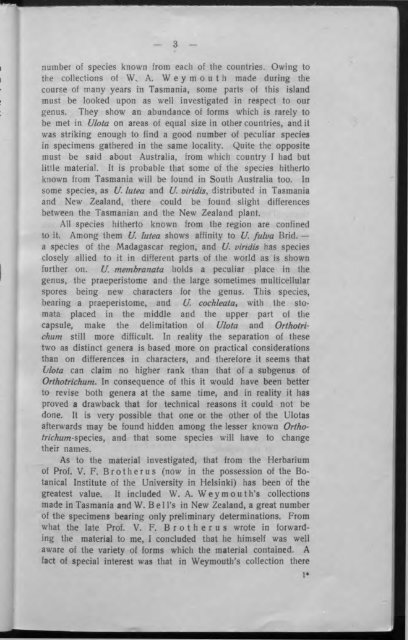
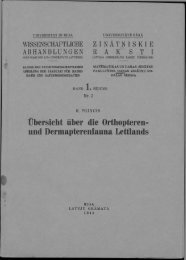
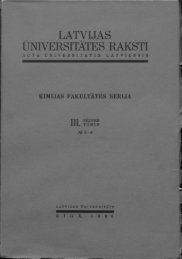
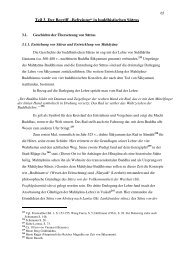
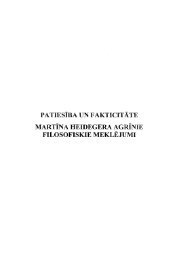
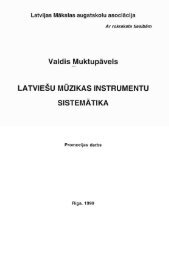
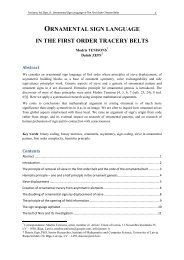
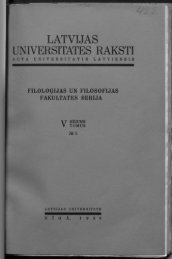
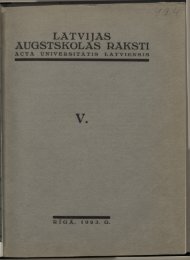


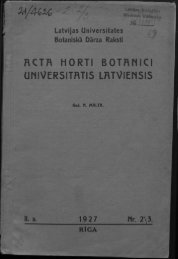
![LATVIJAS] - DSpace](https://img.yumpu.com/11778577/1/190x249/latvijas-dspace.jpg?quality=85)
